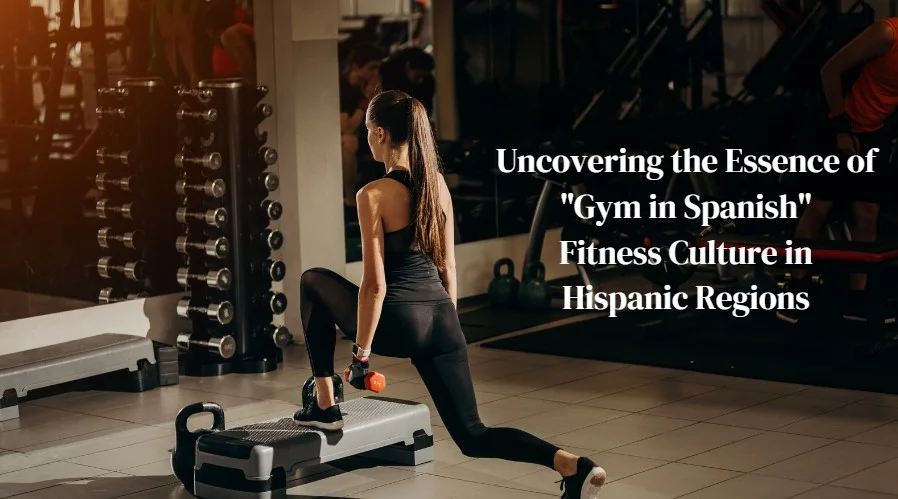Table of Contents
Introduction to Gym Culture in Spanish-speaking Regions
The term “gym” translates to “gimnasio” in Spanish. But beyond mere translation, Gym in Spanish-speaking countries offer a vibrant fitness culture that seamlessly blends the traditional with the modern. From Latin dance-infused classes to age-old sports played for centuries, the essence of a ‘gimnasio’ in these regions is a mirror to their rich heritage and evolving contemporary trends. The cultural tapestry of countries like Spain, Mexico, and Argentina reflects heavily in their fitness regimes.
Whether it’s the rhythmic beats that accompany a workout or the emphasis on group activities, there’s a distinct flavor that sets these ‘gimnasios’ apart. This unique fusion ensures that gym-goers are not just working out physically, but also connecting with a cultural legacy that prioritizes communal well-being and celebrates life.
History and Evolution of the Spanish Gym
Historically, the concept of physical fitness in Spanish-speaking regions was deeply rooted in local sports and communal activities. With the advent of urbanization and global influences, the modern “gimnasio” started emerging in major cities. These Gym in Spanish, while incorporating international fitness regimes, never lost touch with their local essence, often incorporating practices like bullfighting training or flamenco-based aerobics.
It’s fascinating to note how historical events, like the bullfights in Spain, have left their mark on fitness routines. This isn’t mere exercise; it’s a tribute to history, molded to fit the contemporary landscape. With each squat, jump, and twist, there’s a nod to the rich tapestry of traditions that these regions are built upon.
Popular Workouts and Classes in Spanish Gyms
While global trends like Zumba, pilates, and spinning have found their way into gym in Spanish, local flavors always add a unique twist. Classes such as ‘Rumba aerobics’ or ‘Salsa Fit’ merge the lines between festive dance and fitness, making workouts excercise an exhilarating experience.
The passionate spirit of the Latino culture ensures that even a regular gym session feels like a celebration. But it’s not just about dancing. The underlying principle here is to make fitness fun, engaging, and most importantly, sustainable. In a ‘gimnasio’, you’re not just burning calories; you’re living the joy of the Spanish ethos, where life, with all its rhythms and beats, is embraced with open arms.
Read more: World Gym San Diego Reviews
‘Gimnasios’ and Community Building
Gym in Spanish speaking regions is not just about individual fitness; they’re community centers. It’s common for ‘gimnasios’ to host social events, dance nights, or community sports tournaments. They are places where friendships are forged, and communities come together, emphasizing the importance of social bonds in personal fitness journeys.
In these spaces, the line between a neighbor and a workout buddy blurs. It’s not rare to see families working out together or communities rallying to support a member’s fitness goal. This sense of unity, embedded deep within the Spanish-speaking cultures, transforms the Gym in Spanish from a mere space of physical activity to a hub of shared dreams and aspirations.
Embracing Technology and Innovation
Just like any other fitness hub worldwide, Gym in Spanish are rapidly adopting technology. From state-of-the-art equipment to fitness tracking apps in Spanish, the ‘gimnasio’ experience is becoming more personalized and data-driven. This adoption ensures that while the soul of the Spanish gym remains traditional, its methods are aligned with global best practices. But what truly stands out is the seamless amalgamation of tradition and technology. As you step into a ‘gimnasio’, you might find a grandmother attending a VR-facilitated yoga class or a teenager syncing his workout data with a cloud-based app. This juxtaposition is a testament to the adaptability and forward-thinking nature of Spanish-speaking fitness communities.
FAQs
What is the translation of “gym” in Spanish?
The word “gym” is translated to “gimnasio” in Spanish.
Are international fitness trends popular in Spanish-speaking regions?
Yes, international trends like Zumba, pilates, and HIIT are popular, but they often come with a unique Spanish twist, incorporating local dances or traditions.
How does the community aspect shape the gym in Spanish regions?
Gyms or ‘gimnasios’ in these regions are seen as community centers. They host social events and tournaments, emphasizing the social bonds that are integral to the fitness journey in Hispanic cultures.

